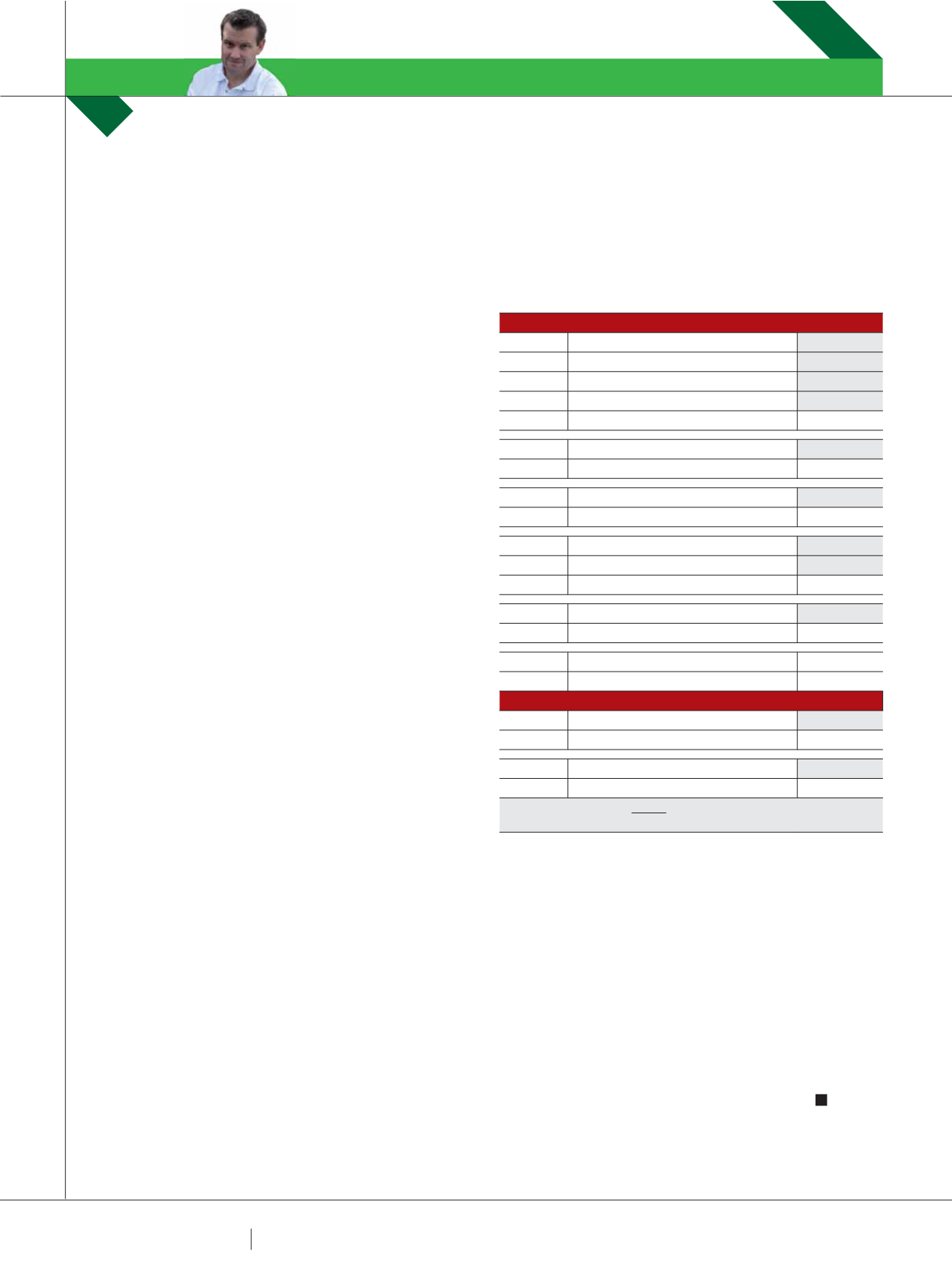

8 2
PLUMBING CONNECTION
SUMMER 2016
ESTIMATING
ANDY FARRELL
ESTIMATING LABOUR RATES
W
hen it comes to pricing a job it’s the responsibility
of the estimator to accurately calculate each
aspect of the project and provide a detailed report
of their findings.
There are three essential elements required to accurately
price a plumbing project, these consist of labour, material
and plant/excavation costs. These elements are used to
create a library of standard rates, which are the catalyst
for estimating. The material and excavation components
often remain relatively consistent as the quantities within a
standard rate rarely change. Labour on the other hand can
be affected by many external factors, and as such, should
have a higher level of focus when pricing a job.
The key to covering the labour component on an estimate
is to first calculate the ‘actual’ cost of employing a qualified
tradesman and dividing it by their total productive hours (on
the tools) over a year.
For example, calculate the total cost of employing a
tradesman by adding their wage, allowances, workers
compensation, superannuation and any redundancy
payment schemes to determine a total ‘yearly’ cost.
Secondly, determine the projected ‘productive’ hours by
calculating the total hours per year (52 weeks x 40 hours/
week = 2080hrs) and then deducting the days off due to
annual leave, public holidays and sick days (approx. 8 weeks).
BASIC LABOUR RATE CALCULATION SHEET SAMPLE.
Most projects should have a consistent labour rate, but
may change due to an additional site EBA allowance. In these
cases, simply fill out a new Labour Rate Calculation Sheet
and enter the figure into your estimating program.
As mentioned above, for estimating purposes we always
use the labour rate for a qualified tradesman as the
standard for pricing project work. The theory behind sticking
with the one labour rate is to ensure we have continuity and
efficiency.
The reasoning behind this theory is that when we
build a standard rate, the labour component is calculated
using an experienced tradesman to perform the work
at a rate of 100% efficiency. For the sake of estimating
we presume an apprentice will be less efficient (for this
example, 20% less efficient) than the tradesman and
will take longer to complete the same task. As it is less
expensive to employ an apprentice (for this example, 20%
cheaper) the cost to complete the same work ‘in theory’
should be equivalent.
The main variance that may occur in relation to labour
is the allowance of time you have provided to perform a
task. For example, if you are installing drainage in an open
area and clear site, then it’s reasonable to assume you will
be more efficient compared to completing the same work
within a confined space or tight area. The cost of an hour’s
labour will not change, but the duration of work will increase.
Therefore, when pricing the latter works, additional hours
need to be added to compensate for the reduced efficiency.
The whole premise of implementing an estimating system is
to improve the accuracy and consistency of pricing plumbing
work, and an important element to achieve this is to determine
the actual cost of labour to ensure you are covered.
ANDY FARRELL
ASKS THE QUESTION: DO YOU KNOW THE COST OF YOUR ESTIMATING LABOUR RATE FOR
CONSTRUCTION WORK?
Contact:
To get an editable copy of our Labour Rate Calculation Sheet
visit –
www.plumbingpack.com.auLABOUR RATE CALCULATION SHEET
A
Basic wage per week
$1,360.00
B
Fares per week
C
Traveling per week
$110.00
D
Special site allowances
$112.00
SUB-TOTAL
$1,582.00
E
WorkCover/Comp (%)
4.50%
SUB-TOTAL
$71.19
F
Long service leave (%)
SUB-TOTAL
$ -
G
Redundancy pay (ACIRT) week
$120.00
H
Superannuation (%)
9.50%
SUB-TOTAL
$129.20
I
Annual leave loading
17.50%
SUB-TOTAL
$18.31
J
TOTAL (per week)
$1,920.70
K
TOTAL (Annual 52 Weeks)
$99,876.28
PRODUCTIVE LABOUR
L
Total weeks worked (per year)
44
SUB-TOTAL
M Productive hours per week
38
LABOUR RATE (Cost):
$59.73
PLEAE NOTE: These figures DO NOT include any mark-ups or profit margins. They
are also indicative only, please ensure you enter your own figures.
















